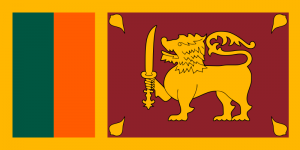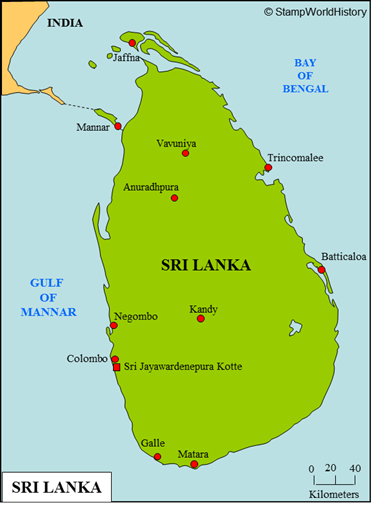ශ්රී ලංකා

Sri Lanka
Quick reference
General issues: Republic 1972-1978, Democratic socialist republic 1978-present
Country name on general issues: Sri Lanka, Shri Lanka
Currency: 1 Rupee = 100 Cent 1972-Present
Population: 2 147 000 in 1972, 20 480 000 in 2013
Political history Sri Lanka
Sri Lanka is an island nation located off the coast of India in southern Asia. Until 1972, Sri Lanka is known as Ceylon. With the exception of the kingdom of Kandy – located in the central and western parts of Ceylon – Ceylon has been colonized since the late 16th century, first by the Portuguese and then by the Dutch. When the Netherlands are invaded by the French in the Napoleonic wars, the control over Ceylon, in 1795, is transferred to the British. First ruled from British India, Ceylon, in 1815, becomes a British colony in its own right. The British, in 1817, add the, until then, independent kingdom of Kandy to the colony. Ceylon is a British colony until 1948, when it becomes an independent dominion within the British Commonwealth. In 1972, Ceylon becomes a republic and adopts the name of Sri Lanka. In 1978 Sri Lanka becomes a democratic socialist republic. The administrative capital is, in 1982, moved from Colombo – the largest city on the island – to Sri Jayawardenepura Kotte.
Sri Lanka has several population groups. The majority are the Sinhalese, and an important minority are the Tamil. In 1983, tensions between these groups escalate as the Tamil proclaim an independent state in the north of the island. A civil war ensues that – with periods of cease fire – will last until an agreement is reached in 2009. Since the end of the conflict, the Sri Lanka economy has seen substantial growth.
Postal history Sri Lanka
The first stamps for Ceylon were issued in 1857. The stamps of the colony of Ceylon were superseded by those of the dominion of Ceylon in 1948 and by those of Sri Lanka in 1972.
Album pages
← Previous page: South ArabiaNext page: Syria →



